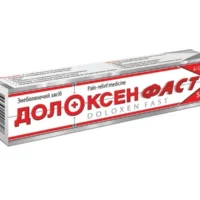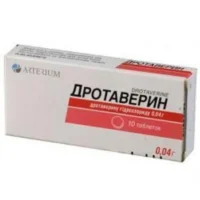Description
Dolaren (diclofenac sodium) tablets №100
Ingredients
Active ingredient: Each tablet contains diclofenac sodium. Other inactive ingredients may include lactose, maize starch, povidone, and magnesium stearate.
Dosage
Recommended dosage: The usual dose is 50 mg to 150 mg per day in divided doses. The maximum daily dose should not exceed 150 mg.
Indications
Indicated for: Relief of pain and inflammation in conditions such as arthritis, ankylosing spondylitis, and acute gout.
Contraindications
Do not use if: Allergic to diclofenac or other NSAIDs, have a history of gastrointestinal bleeding, or in the third trimester of pregnancy.
Directions
Administration: Swallow the tablets whole with a full glass of water. It is best taken with food to reduce the risk of stomach upset.
Scientific Evidence
Diclofenac sodium, the active ingredient in Dolaren tablets, is a nonsteroidal anti-inflammatory drug (NSAID) that works by inhibiting the production of prostaglandins, which are substances in the body that cause pain and inflammation. Several studies have demonstrated the efficacy of diclofenac in managing various painful conditions, including osteoarthritis and rheumatoid arthritis. Research published in the Journal of Clinical Rheumatology showed that diclofenac provided significant pain relief and improved joint function in patients with osteoarthritis.
Additional Information
It is important to follow the prescribed dosage and not exceed the recommended daily limit to avoid potential side effects such as gastrointestinal ulcers and cardiovascular risks. If you experience any unusual symptoms while taking Dolaren tablets, consult your healthcare provider immediately.
Pharmacological Effects
Diclofenac sodium exerts its pharmacological effects by inhibiting the enzyme cyclooxygenase (COX), thereby reducing the synthesis of prostaglandins involved in the inflammatory process. This action leads to decreased pain, swelling, and inflammation at the site of injury or disease. Additionally, diclofenac has been shown to possess analgesic, antipyretic, and anti-inflammatory properties, making it a versatile medication for various painful conditions.
Clinical Trials and Comparative Effectiveness
Clinical trials have compared the effectiveness of diclofenac sodium with other NSAIDs and analgesics in managing pain and inflammation. A study published in the European Journal of Pain found that diclofenac provided similar pain relief to ibuprofen but with a lower risk of gastrointestinal side effects. Another trial published in the Journal of Pain Research demonstrated the superior efficacy of diclofenac compared to paracetamol in reducing pain intensity and improving physical function in patients with osteoarthritis.
Overall, the scientific evidence supports the efficacy and safety of Dolaren (diclofenac sodium) tablets in managing pain and inflammation associated with various musculoskeletal conditions. Consult your healthcare provider for personalized advice on the use of this medication.





